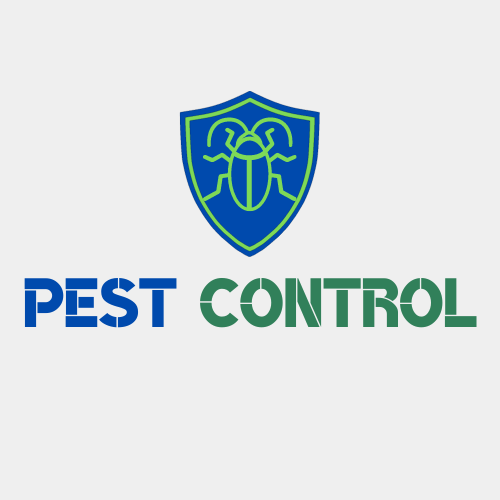Effective Pest Control Strategies for Businesses: A Guide to Keeping Your Operations Pest-Free
In the bustling community of 67275 Lomas de Córdoba, Juárez, maintaining a pest-free environment is crucial for various industries, especially those that rely on consistent quality and customer satisfaction. Whether it’s a small electronics manufacturer or a large food processing facility, ensuring that pest control measures are in place can significantly impact business operations. This article outlines effective pest management strategies that can help minimize pest-related disruptions in the supply chain while improving overall customer satisfaction.
Understanding the Importance of Pest Control
Pest control is more than just keeping unwanted guests at bay. It encompasses a series of practices designed to prevent and eliminate pest infestations in various environments. Keeping a business pest-free not only protects the integrity of products but also maintains compliance with industry regulations. In many cases, customers expect assurance that the products they receive have been handled safely and hygienically.
For businesses located in Lomas de Córdoba, Juárez, the implications of pest control extend beyond aesthetics; it speaks to the commitment of the organization to ensure high-quality product delivery. A proactive approach to pest control can enhance customer satisfaction by providing peace of mind regarding the safety and quality of the products offered.
Implementing Comprehensive Pest Management
1. Regular Inspections and Monitoring
Regular inspections are a foundational element of effective pest control. Employing pest control specialists to conduct thorough assessments of the premises aids in identifying potential access points and environmental factors that may attract pests. Establish a monitoring system that enables quick identification and action at the first signs of pest activity.
2. Sealing Cracks and Gaps
One of the most effective ways to prevent pest infestations is to seal cracks and gaps in walls and floors. Pests such as rodents, ants, and termites can exploit even the smallest openings. Inspect your facility for any structural vulnerabilities and take immediate corrective action. Not only does this reduce the likelihood of pest entry, but it also contributes to energy efficiency and overall building integrity.
3. Installing Physical Termite Shields
Particularly for businesses struggling with underground pest issues, installing physical termite shields on foundations provides an added layer of defense. These barriers are designed to prevent termites from accessing the foundation of a building, greatly reducing the risk of infestation. Manufacturers and warehouses should consider such preventative measures to protect valuable inventory and equipment.
4. Incorporating Sustainable Practices
As the world increasingly focuses on sustainable practices, it’s important to choose pest control measures that reflect this commitment. Utilizing environmentally friendly pesticides and implementing integrated pest management (IPM) methods can help balance efficacy with safety. Regular pesticide use reporting for compliance is necessary in many sectors, and by aligning businesses with sustainable practices, customer trust and satisfaction can be further enhanced.
5. Tailored Solutions for Specific Industries
Different industries face unique pest-related challenges. For example, small electronics manufacturers often require specialized termite control strategies to protect sensitive equipment and components. Having a pest control provider that understands the intricacies of the electronics industry can help mitigate risks and minimize disruptions.
By tailoring solutions to meet specific needs, manufacturers can maintain their production schedules and uphold their reputation as a reliable supplier.
Maintaining Compliance with Regulations
In many industries, compliance with pest control regulations is paramount. Failing to adhere to local, state, and federal guidelines can result in legal consequences, reputation damage, and financial losses. Developing a detailed pest control plan that includes pesticide use reporting for compliance allows businesses to track their pest control efforts and demonstrate their commitment to maintaining high safety standards.
Training Employees on Pest Awareness
Employee training plays a crucial role in pest prevention. Conducting workshops to educate staff about common pests, signs of infestations, and proper sanitation practices can empower them to be vigilant against potential issues. Encourage employees to report any unusual sightings or concerns promptly, as early detection is key to successful pest management.
The Role of Technology in Pest Control
Advancements in technology have revolutionized the way businesses manage pests. From smart traps that alert managers to pest activity to mobile applications for reporting issues, technology offers innovative solutions that can streamline pest control efforts. Utilizing these tools can reduce reliance on chemical treatments and improve overall effectiveness.
Choosing the Right Pest Control Provider
Selecting a reputable pest control provider is fundamental to the success of your pest management plan. Look for companies with a track record of success in your industry, such as those experienced in providing termite control for small electronics manufacturers. Reading reviews, checking certifications, and seeking recommendations can help ensure you partner with a provider that aligns with your company’s values and requirements.
Continuous Evaluation and Improvement
Pest control is not a one-time task but an ongoing commitment. Regularly evaluate the effectiveness of your pest management strategies and adjust your plan as needed. This might include revisiting your sealing measures, increasing staff training sessions, or even consulting with your pest control provider for new recommendations.
Conclusion
In conclusion, businesses in 67275 Lomas de Córdoba, Juárez, can greatly benefit from implementing comprehensive pest control strategies. By sealing cracks and gaps, installing physical termite shields, and providing tailored pest management solutions that minimize disruptions in the supply chain, organizations can enhance customer satisfaction significantly.
Moreover, by maintaining compliance through effective pesticide use reporting, training employees, and embracing innovative technologies, businesses can build trust with their clients and protect their valuable assets. As the pest control landscape continues to evolve, staying informed and proactive will be essential in ensuring that operations remain pest-free and productive. Investing in effective pest control measures not only safeguards products but also supports the overall health of your business and its customer relationships.
